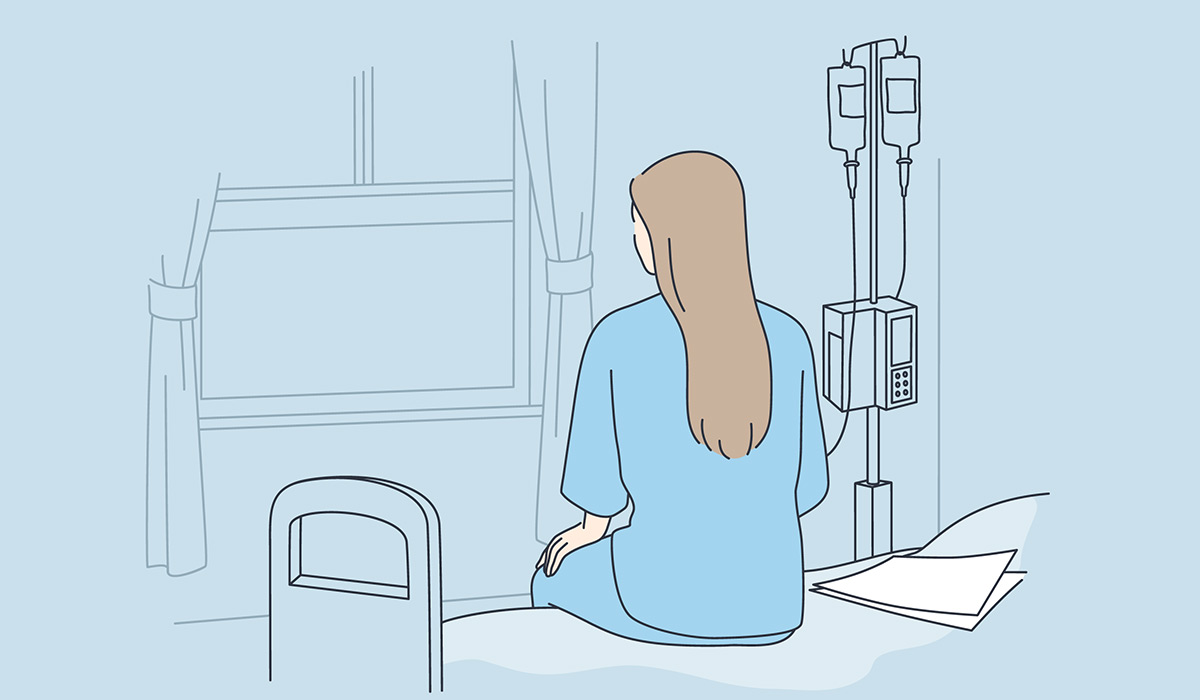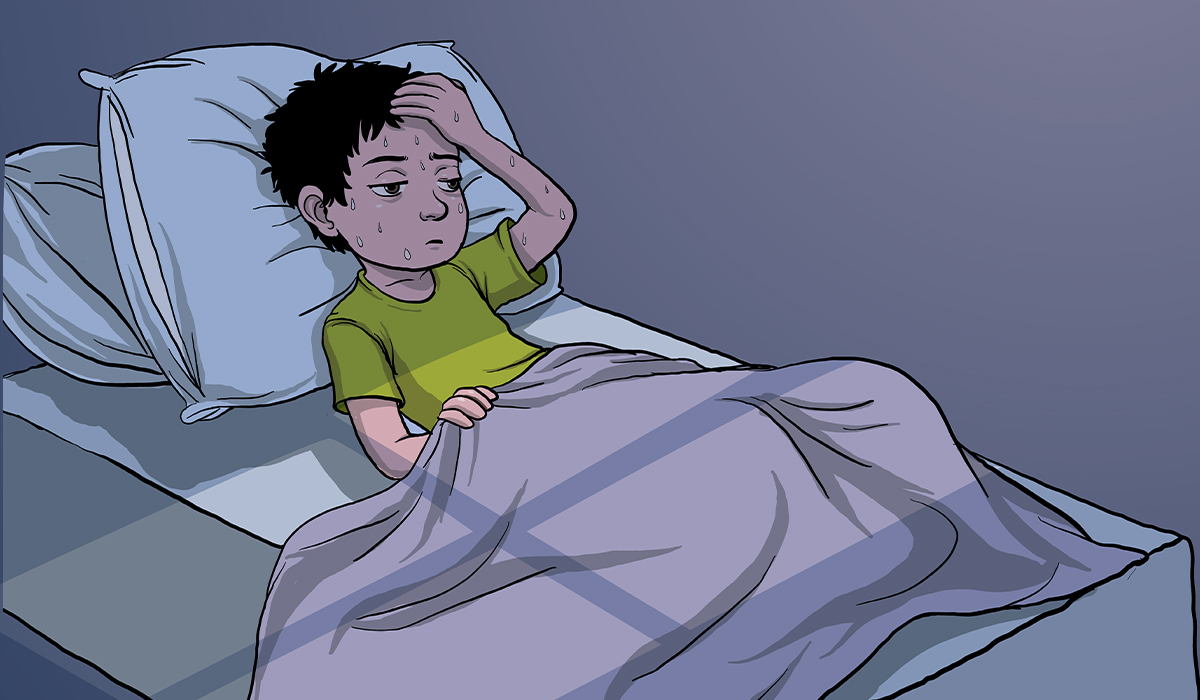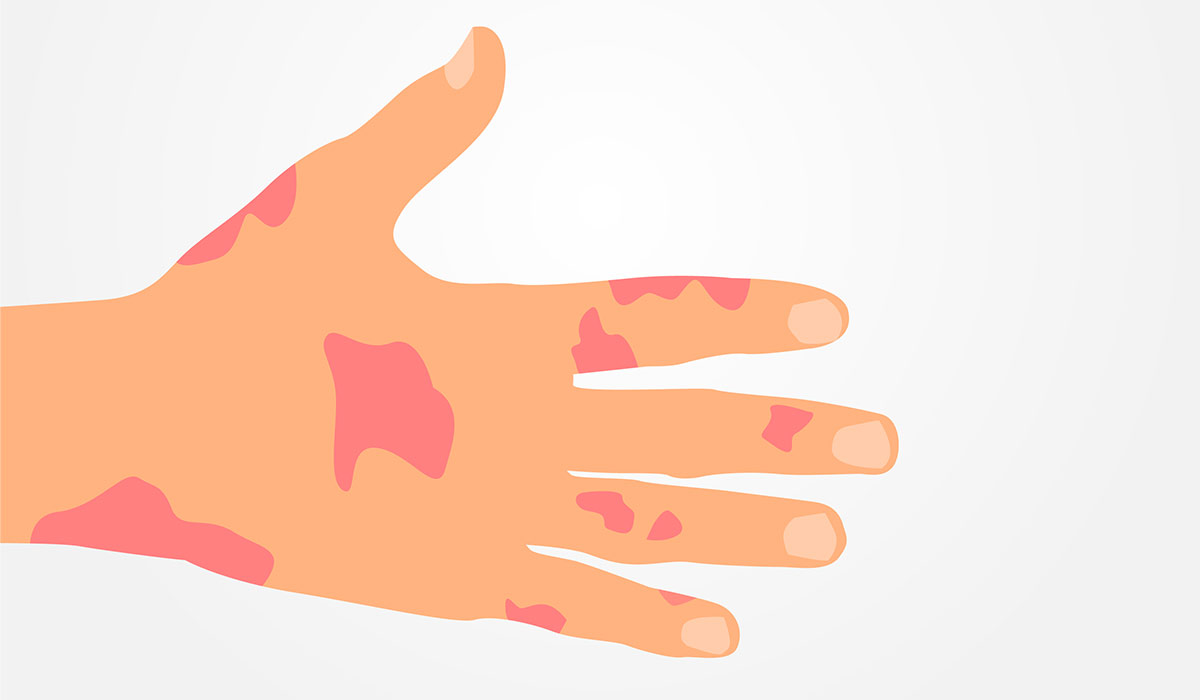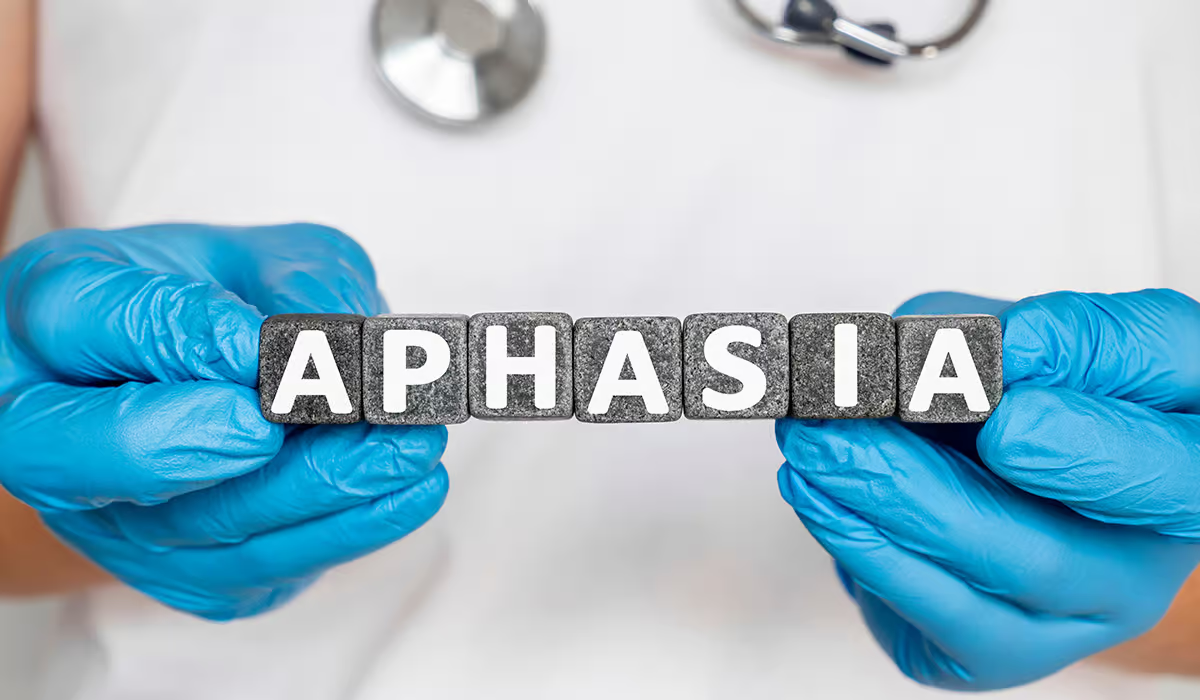The virus replicating causes the adjacent, infected epithelial cells to merge into large structures called syncytia.
Symptoms
The severity of symptoms varies significantly between young children and healthy adults.
In healthy adults, symptoms of RSV infection are usually quite limited, and the disease is mild. Most often, the symptoms of infection caused by the RSV resemble a common cold.
The symptoms of RSV infection include:
Cough
RSV often causes a cough that can be dry or wet. Profuse discharge may accompany it. The cough may be persistent and worsen, especially during sleep.
Rhinitis
In RSV infection, the virus enters cells in the nasal cavity and paranasal sinuses. It causes inflammation, which is a defensive reaction from the immune system. Inflammation causes the nasal mucosa to produce more mucus and dilate the blood vessels in the nose. Rhinitis can manifest itself as:
- Runny nose
- Nasal congestion (a feeling of a stuffy or blocked nose)
- Sneezing
- Itchy nose
- Postnasal drip (Excess mucus produced in the nasal passages may drip down the throat).
Home remedies for rhinitis include:
- Saline nasal sprays
- Nasal bulb suction – Infants and young children cannot blow their noses or breathe through their mouths, so it is necessary to clear their noses manually to make breathing easier.
- Decongestant nasal drops
- Humidifier
- Adequate hydration
Fever
Fever is a defensive reaction of the body to contact with a pathogen.
Regarding RSV, mild to moderate body temperature elevation is observed. Fever usually does not exceed 38 degrees Celsius.
Fatigue and Weakness
RSV infection can lead to general weakness and fatigue. Infected people may have less energy and feel drowsy. Healthcare professionals recommend resting and excessive physical effort avoidance during the infection period.
Headaches and Muscle Pains
RSV can cause muscle and joint pain as well as headaches.
During illness, immune system cells produce proteins that intensify the inflammation in the infected body. Unfortunately, cytokines affect the entire body, including muscles and joints. Consequently, discomfort and pain in different areas of the body may appear.
Breathing Difficulties
Breathing difficulties could be a sign of inflammation happening in the lower respiratory tract. If you notice this symptom in your child (movement of the wings of the nose during breathing, drawing in the intercostal spaces and the space above and below the clavicle, significantly accelerated breathing), consult a doctor immediately.
The Bluish Color of the Skin
This symptom is also known as cyanosis. The reason is the lack of oxygen caused by the respiratory tract infection.
No Appetite
During a Respiratory Syncytial Virus infection, you may experience a loss of appetite.
Affected infants may experience feeding difficulties, which is a worrying symptom as it can lead to a lack of weight gain.
Bronchiolitis
Sometimes, RSV affects the lower respiratory tract. Bronchiolitis may then develop. The bronchioles are tiny airways. They are in the form of small flaccid tubes. RSV most commonly causes bronchiolitis in children. The infection in the bronchioles usually leads to a reduction in their diameter. This obstructs airflow through them and quickly leads to shortness of breath.
In addition to the usual symptoms of RSV infection, symptoms of shortness of breath join in this case. During the most severe courses of the disease, periods of apnea accompany the described symptoms of shortness of breath, necessitating hospitalization for such children.
Pneumonia (Lung Infection)
In extreme cases, pneumonia can lead to respiratory failure. This condition is a direct threat to health and requires urgent in-hospital treatment. For this reason, the occurrence of severe respiratory symptoms should never be ignored.
How Can You Get Infected?
RSV spreads by droplets, which means that the infectious material is mucus from a sick person’s respiratory tract and mouth, sprayed into the air as tiny droplets while sneezing or coughing. Then, the droplets meet the other person’s mucous membrane in their nose or conjunctiva. It is worth remembering that you can also catch a virus by kissing.
The source of infection is a symptomatic person and an infected person without visible symptoms.
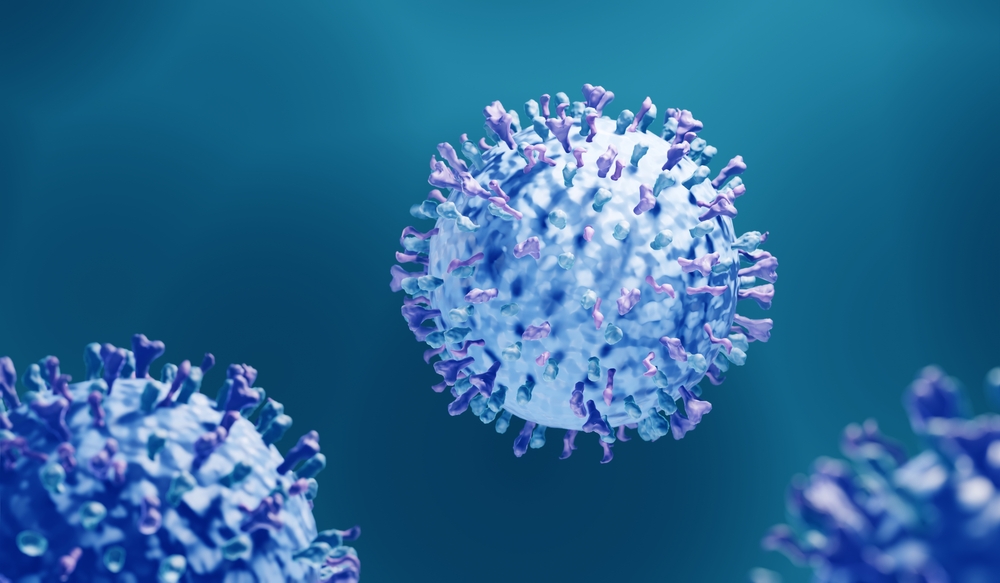
An infected person is contagious for about 3 to 8 days but can also be infectious two days before the onset of symptoms.
It is worth mentioning that the RSV virus can survive for several hours on the skin (e.g., hands) and on other contact surfaces, such as door handles, elevator buttons or telephones, and in the case of children, toys. In this case, touching the eyes or nose can also lead to the entry of the germ into the body.
That’s why it’s crucial to practice hygiene habits. Make sure to wash your hands regularly, mainly when infections are more frequent.
The RSV virus is highly contagious, which means that even a short interaction with an infected person can pass the virus to another person.
This results in the easy development of local epidemic outbreaks, for example, in nurseries, kindergartens, or hospital wards.
Experts estimate that one person with RSV will infect an additional three people. In comparison, in the case of the flu (influenza virus), it is one person.
How is RSV Infection Diagnosed?
Doctors diagnose RSV infection based on symptoms, physical examination, and additional tests. The RSV tests include:
Antigen Test
This is one of the most frequently performed tests in diagnosing RSV. It detects virus antigens in the material obtained by swab from the nose or nasopharynx. This test allows for a quick diagnosis of an infection in the acute phase.
PCR Test

It is also possible to perform PCR analysis to find genetic material of the Respiratory Syncytial Virus. This test exhibits higher sensitivity and specificity; however, obtaining the result takes longer.
Detection of RSV-Specific Antibodies
Another diagnostic method is the detection of RSV-specific IgG antibodies in the blood serum. Antibodies are proteins produced by our immune system. The body starts its production when it detects the presence of a virus.
Treatment
Usually, the RSV infection should pass by itself in a week or two. There is no causal treatment for RSV infection. The treatment is based on relieving the symptoms.
Here are a few tips that might be helpful while dealing with RSV infection:
- Stay hydrated. It’s crucial to drink plenty of fluids and not become dehydrated while fighting an infection. Regarding children, monitor whether the number of diaper changes does not decrease.
- Fever reducers and painkillers like paracetamol or ibuprofen can help decrease temperature and unpleasant pain symptoms. Remember always to take the correct dose and track the amount of substance you take to not overdose on the medication.
- Nasal drops that decongest blood vessels can bring relief from a stuffy nose. However, remember not to use them for more than seven days. In the case of too long use of the substances contained in them, drug-induced rhinitis may appear.
- Sinus irrigation involves inserting an aqueous saline solution into the nose to clean the nasal cavities and sinuses. Sinus rinsing offers a natural way to alleviate troublesome symptoms such as nasal congestion, runny nose, dryness in the nasal cavity, and the uncomfortable feeling of sinus pressure. It achieves this by effectively cleansing, unblocking, and moisturizing the sinuses, providing much-needed relief.
- Humidification of the air can help with reducing coughing and nasal mucous obstruction.
In severe cases of RSV infection, a hospital stay might be required. During a hospital stay, the healthcare team treats RSV infection with oxygen therapy and intensified hydration. In some cases, doctors may administer medicine that dilates the airways. However, the decision to use this treatment depends on the specific situation of each case. Sometimes, it is necessary to put in a gastric tube if eating is complex and, in the case of critically ill patients, treatment in an intensive care unit.
Risk Groups
Due to the widespread RSV, during the period of increased morbidity, the risk of infection is higher in people staying in large groups.
A higher risk of a severe course of the disease occurs in:
Infants and Young Children
53% of children get an RSV infection before their first birthday. Another 33% get the infection before the age of 2.
Bronchiolitis is the most frequently encountered RSV infection among infants and children up to 2 years old. Acute inflammation of the epithelium of the lower, small respiratory tract (bronchioles) causes the disease.
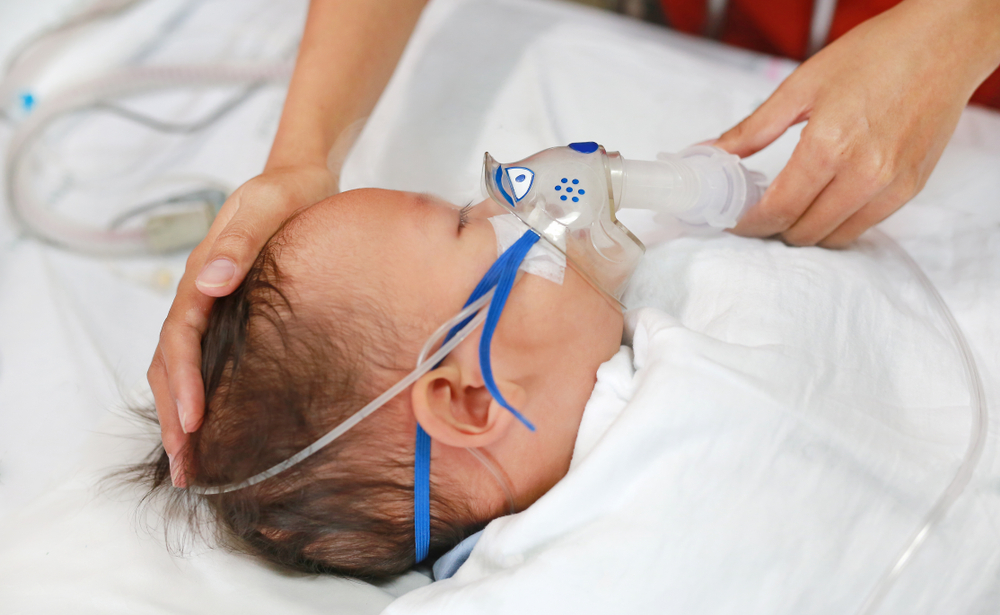
Alarm symptoms in children include:
- Sudden deterioration of the general condition
- Development of wheezing
- Contraction of the intercostal spaces during breathing
- Increased breathing rate (tachypnoea)
- Heavy, productive cough
- High fever
- No appetite
- Symptoms of dehydration – small amounts of urine, fewer diaper changes
- Apathy – the reduced activity of the child
If you notice any of the symptoms listed above, don’t hesitate to reach a pediatrician. They will carefully consider whether it’s advisable to continue the treatment at home or if hospitalization is warranted based on the unique circumstances and needs.
Premature Babies
Among infants, premature infants (born before 37 weeks of gestation) are even more vulnerable to severe infection.
The respiratory system of these children is not fully developed, so they are more prone to infections.
Seniors and People With Weak Immune System
In people over 60 years of age, the immune system weakens significantly. Seniors also often develop chronic diseases that weaken the body, such as diabetes, hypertension, and cardiovascular and kidney diseases. That is why older adults are more likely to develop severe forms of the disease after catching RSV.
Prevention
Recently, the first vaccine against RSV for people above 60 years of age was approved by FDA (U.S. Food and Drug Administration).
In children with a high risk of severe RSV infection (premature babies, children with coexisting diseases such as bronchopulmonary dysplasia, etc.), an antibody called Palvizumab is used intramuscularly. It is administered once a month during RSV season.
In general, infections might be prevented through proper hygiene habits and caution.
The rules that are worth following include:
- Frequent hand washing
- Hand disinfection with antibacterial gels if you can’t access water and soap. It is crucial to choose gels with an alcohol content of at least 70%
- Keeping distance from people showing symptoms of colds
- Wearing a face mask in crowded places like public transport or shopping malls
- Disinfection of frequently touched objects on which germs can accumulate (door handles, handrails)
- Respiratory Etiquette. Promote good respiratory hygiene by practicing coughing and sneezing etiquette. Cover your mouth and nose with a tissue or elbow when coughing or sneezing. Remember to dispose of used tissues immediately.
Maintaining a healthy lifestyle also helps to prevent infections by boosting natural immunity. The leads that should be followed are:
- Not smoking (smoking adversely affects the condition of the respiratory tract epithelium, increasing its susceptibility to infections)
- Healthy diet
- Regular physical activity
Breastfeeding is a natural way of infection prevention. Experts recommend a minimum of 6 months of natural breastfeeding. In addition, infants and young children must not be exposed to tobacco smoke because it contains harmful substances that reduce immunity when inhaled.
Unfortunately, getting an RSV infection does not guarantee immunity to getting sick again.
Complications
Complications of RSV infection include:
- Pneumonia
- Otitis (inflammation of the ear)
- Laryngitis
- Exacerbation of coexisting diseases, for example, bronchial asthma
- Febrile convulsions (fever-induced seizures)
- Secondary bacterial infections (caused by the weakening of the immune system after infection)
When Should You See a Doctor?
If you experience breathing difficulties, become dehydrated, or your general condition suddenly deteriorates, you should contact a healthcare professional.
Also, the persistence of symptoms for more than two weeks should alert you and should be consulted with a doctor.
In children, you should take particular caution when dealing with RSV infection. Any signs suggestive of lower respiratory tract infection, such as shortness of breath, bluish skin color, or feeding difficulty, require immediate medical attention.
Sources
- Bawage SS, Tiwari PM, Pillai S, Dennis V, Singh SR. Recent advances in diagnosis, prevention, and treatment of human respiratory syncytial virus. Adv Virol. 2013;2013:595768. doi: 10.1155/2013/595768. Epub 2013 Dec 9. PMID: 24382964; PMCID: PMC3872095.
https://www.ncbi.nlm.nih.gov/pmc/articles/PMC3872095/ - Centers for Disease Control and Prevention (2023) RSV.
https://www.cdc.gov/rsv/about/symptoms.html - Krilov LR, Roberts NJ Jr. Respiratory Syncytial Virus (RSV) Update. Viruses. 2022 Sep 23;14(10):2110. doi: 10.3390/v14102110. PMID: 36298665; PMCID: PMC9607319.
https://pubmed.ncbi.nlm.nih.gov/36298665/ - Colosia A, Costello J, McQuarrie K, Kato K, Bertzos K. Systematic literature review of the signs and symptoms of respiratory syncytial virus. Influenza Other Respir Viruses. 2023 Feb 5;17(2):e13100. doi: 10.1111/irv.13100. PMID: 36824394; PMCID: PMC9899685.
https://www.ncbi.nlm.nih.gov/pmc/articles/PMC9899685/ - U.S. Food and Drug Administration. (2023) FDA approves first respiratory syncytial virus RSV vaccine
https://www.fda.gov/news-events/press-announcements/fda-approves-first-respiratory-syncytial-virus-rsv-vaccine - Piedimonte G, Perez MK. Respiratory syncytial virus infection and bronchiolitis. Pediatr Rev. 2014 Dec;35(12):519-30. doi: 10.1542/pir.35-12-519. Erratum in: Pediatr Rev. 2015 Feb;36(2):85. PMID: 25452661; PMCID: PMC5029757.
https://www.ncbi.nlm.nih.gov/pmc/articles/PMC5029757/ - Rodriguez-Fernandez R, Mejias A, Ramilo O. Monoclonal Antibodies for Prevention of Respiratory Syncytial Virus Infection. Pediatr Infect Dis J. 2021 May 1;40(5S):S35-S39. doi: 10.1097/INF.0000000000003121. PMID: 34042909.
https://pubmed.ncbi.nlm.nih.gov/34042909/ - Zylbersztejn A, Pembrey L, Goldstein H, Berbers G, Schepp R, van der Klis F, Sande C, Mason D, Wright J, Smyth R, Hardelid P. Respiratory syncytial virus in young children: community cohort study integrating serological surveys, questionnaire and electronic health records, Born in Bradford cohort, England, 2008 to 2013. Euro Surveill. 2021 Feb;26(6):2000023. doi: 10.2807/1560-7917.ES.2021.26.6.2000023. PMID: 33573711; PMCID: PMC7879500.
https://www.ncbi.nlm.nih.gov/pmc/articles/PMC7879500/ - Del Vecchio A, Franco C, Del Vecchio K, Umbaldo A, Capasso L, Raimondi F. RSV prophylaxis in premature infants. Minerva Pediatr. 2018 Dec;70(6):579-588. doi: 10.23736/S0026-4946.18.05300-8. Epub 2018 Oct 18. PMID: 30334620.
https://pubmed.ncbi.nlm.nih.gov/30334620/ - Del Vecchio A, Franco C, Del Vecchio K, Umbaldo A, Capasso L, Raimondi F. RSV prophylaxis in premature infants. Minerva Pediatr. 2018 Dec;70(6):579-588. doi: 10.23736/S0026-4946.18.05300-8. Epub 2018 Oct 18. PMID: 30334620.
https://pubmed.ncbi.nlm.nih.gov/28084708/ - Reis J, Shaman J. Retrospective Parameter Estimation and Forecast of Respiratory Syncytial Virus in the United States. PLoS Comput Biol. 2016 Oct 7;12(10):e1005133. doi: 10.1371/journal.pcbi.1005133. PMID: 27716828; PMCID: PMC5055361.
https://pubmed.ncbi.nlm.nih.gov/27716828/ - Baraldi E, Checcucci Lisi G, Costantino C, Heinrichs JH, Manzoni P, Riccò M, Roberts M, Vassilouthis N. RSV disease in infants and young children: Can we see a brighter future? Hum Vaccin Immunother. 2022 Nov 30;18(4):2079322. doi: 10.1080/21645515.2022.2079322. Epub 2022 Jun 20. PMID: 35724340; PMCID: PMC9721445.
https://pubmed.ncbi.nlm.nih.gov/35724340/ - Andreas NJ, Kampmann B, Mehring Le-Doare K. Human breast milk: A review on its composition and bioactivity. Early Hum Dev. 2015 Nov;91(11):629-35. doi: 10.1016/j.earlhumdev.2015.08.013. Epub 2015 Sep 12. PMID: 26375355
https://pubmed.ncbi.nlm.nih.gov/26375355/


